Traducción generada automáticamente
Mostrar original
Mostrar traducción
Beautiful and evocative oil painting by the great French school artist Moya Dyring specializing in marinas.
It depicts a harbor with boats probably from the French Riviera painted with great intensity but giving, at the same time, a sweet sense of serenity.
Moya Claire Dyring was born in Coburg, Victoria in 1909.
She produced drawings, oil paintings and pastels.
She was one of the first women artists to embrace Modernism and exhibit cubist paintings in Melbourne.
For several years she was a member of the modern art community known as the Heide Circle, named after the home of art collectors John and Sunday Reed, and now the Heide Museum of Modern Art.
This painting, never before on the market, comes from an important French private collection and is beautified by an impressive antique frame in gilded wood, in almost perfect condition.
Every item of our Gallery, upon request, is accompanied by a certificate of authenticity issued by Sabrina Egidi official Expert in Italian furniture for the Chamber of Commerce of Rome and for the Rome Civil Courts.
Dyring then travelled to the USA and France, where she lived most her life. Her work is held in the Heide Museum as well as the National Gallery of Australia.
One of her earliest works in cubist in style, Melanctha, 1934, was acquired by Sunday Reed.
In 1934 Dyring also painted Portrait of Sunday Reed which went into the Reed's collection, along with a cubist style Portrait of a Woman from the same year.
While her early works were figurative or cubist, in France she turned to landscape as she travelled to various towns throughout France.
In her later years, unable to travel freely, she painted children against the backdrop of Paris.
As time passed, she was largely glossed over and not included in major exhibitions of artists, especially women artists, of the 30s, 40, and 50s.
In 2002, at the University of Melbourne, Gaynor Patricia Cuthbert delved into her life and work for a doctoral thesis, helping to bring back attention to her work.
Collection
The Heide Museum of Modern Art holds many paintings and drawings, some acquired through the John and Sydney Reed collection.
The National Gallery of Australia, Canberra includes one drawing.
The Art Gallery of New South Wales holds multiple works.
Third child of Carl Peter Wilhelm Dyring, medical practitioner, and his second wife Dagmar Alexandra Esther, née Cohn, both Victorian born. Moya was educated (1917-27) at Firbank Church of England Girls' Grammar School, Brighton.
After visiting Paris in 1928, she studied (1929-32) at the National Gallery schools, Melbourne, and shared fellow student Sam Atyeo's interest in artistic innovation.
Classical modernism engaged her attention in the early 1930s.
She painted at the George Bell school and studied under Rah Fizelle in Sydney; Mary Alice Evatt and Cynthia Reed were her colleagues.
For several months in 1937 she took charge of Heide, the home and garden of John and Sunday Reed, at Bulleen, Melbourne.
The Reeds were pivotal both to her sympathy for modernism and her belief in congenial fellowship.
She enjoyed something of the intense relationship with Sunday Reed that the latter would subsequently extend to Joy Hester.
In June Dyring held an exhibition, opened by H. V. Evatt, at the Riddell Gallery, Melbourne.
Less enthusiastic than the Reeds and the Evatts about her art, Basil Burdett wrote of her 'somewhat incoherent interpretation of modern ideas', although he did acknowledge that her work had 'audacity of colour and a certain monumental feeling for form . . . qualities rare enough in Australian painting'.
In August Dyring embarked for Panama whence she travelled by bus to New York, breaking her journey to view major galleries.
She had intended to paint in the United States of America, but disliked the work of contemporary American artists and sailed for France.
In 1938 she was based in Paris, taking advantage of Atyeo's contacts within the avant-garde.
She studied at the Académie Colarossi, the Académie de la Grande Chaumière and with Andre Lhote, although by October she denounced him as a 'racketeer'.
In 1939 Dyring and Atyeo settled on a farm at Vence, France; inspired by memories of Heide, they grew fruit and flowers.
Sam accepted a commission to decorate a house in Dominica, West Indies, leaving Moya at Vence.
Evacuated to Australia via South Africa, where she painted and searched for tribal art, she then journeyed to Dominica and married Atyeo.
They were not happy, neither painted and Dyring was ill. Evatt offered Atyeo work and Dyring accompanied him to the U.S.A.
She viewed art, painted occasionally and claimed to have exhibited in Washington in 1943.
After World War II Evatt found Sam various postings, while Moya returned to Paris to pursue a full-time career in art.
They were to be divorced in 1950.
from about 1946 Dyring's art was more personal than innovative.
She gained a considerable reputation among French regionalist and nationalist artists for her sympathetic appreciation of provincial scenes and life.
Bernard Smith placed her in the French tradition of intimiste painters.
In 1948 she leased and renovated an apartment on the Ile St Louis, which, as Chez Moya, became a centre for Australians who enjoyed her hospitality, cooking and practical assistance.
She revisited Australia and exhibited in various cities in 1950, 1953, 1956, 1960 and 1963; the press carried her reports of Parisian cultural life.
Dyring held a solo exhibition in London in December 1949 and was in close contact with expatriate Australians, among them Loudon Sainthill, Donald Friend, David Strachan, Alannah Coleman and Margaret Olley.
In 1961 she curated the Australian section of the Paris Biennale.
She died of cancer on 4 January 1967 at Wimbledon, London.
An apartment for visiting Australian artists was established in her memory at the Cité Internationale des Arts, Paris.
Australian Dictionary of Biography, Volume 14 , 1996
The dimensions are frame included
Hermoso y evocador óleo de la gran artista de la escuela francesa Moya Dyring especializada en puertos deportivos.
Representa un puerto con barcos probablemente de la Riviera francesa pintado con gran intensidad pero dando, al mismo tiempo, una dulce sensación de serenidad.
Moya Claire Dyring nació en Coburg, Victoria, en 1909.
Realizó dibujos, óleos y pasteles.
Fue una de las primeras mujeres artistas en abrazar el Modernismo y exponer pinturas cubistas en Melbourne.
Durante varios años fue miembro de la comunidad de arte moderno conocida como el Círculo Heide, llamado así por la casa de los coleccionistas de arte John y Sunday Reed, y ahora Museo Heide de Arte Moderno.
Este cuadro, nunca antes en el mercado, procede de una importante colección privada francesa y está embellecido por un impresionante marco antiguo de madera dorada, en casi perfecto estado.
Cada artículo de nuestra Galería, previa solicitud, va acompañado de un certificado de autenticidad expedido por Sabrina Egidi Experta oficial en muebles italianos para la Cámara de Comercio de Roma y para los Tribunales Civiles de Roma.
Dyring viajó después a Estados Unidos y Francia, donde vivió la mayor parte de su vida. Su obra se conserva en el Museo Heide y en la Galería Nacional de Australia.
Una de sus primeras obras de estilo cubista, Melanctha, 1934, fue adquirida por Sunday Reed.
En 1934, Dyring también pintó Retrato de Sunday Reed, que pasó a la colección Reed, junto con un Retrato de mujer de estilo cubista del mismo año.
Si bien sus primeras obras eran figurativas o cubistas, en Francia se decantó por el paisaje mientras viajaba por diversas ciudades del país.
En sus últimos años, incapaz de viajar libremente, pintó niños con París como telón de fondo.
Con el paso del tiempo, su obra pasó desapercibida y no se incluyó en las grandes exposiciones de artistas de los años 30, 40 y 50, especialmente de mujeres.
En 2002, en la Universidad de Melbourne, Gaynor Patricia Cuthbert profundizó en su vida y obra para una tesis doctoral, contribuyendo a que se volviera a prestar atención a su trabajo.
Colección
El Museo Heide de Arte Moderno alberga numerosas pinturas y dibujos, algunos adquiridos a través de la colección de John y Sydney Reed.
La Galería Nacional de Australia, en Canberra, posee un dibujo.
La Galería de Arte de Nueva Gales del Sur posee varias obras.
Tercer hijo de Carl Peter Wilhelm Dyring, médico, y su segunda esposa Dagmar Alexandra Esther, de soltera Cohn, ambos nacidos en Victoria. Moya estudió (1917-27) en la Firbank Church of England Girls' Grammar School de Brighton.
Tras visitar París en 1928, estudió (1929-32) en las escuelas de la National Gallery de Melbourne, y compartió con su compañero de estudios Sam Atyeo el interés por la innovación artística.
El modernismo clásico atrajo su atención a principios de la década de 1930.
Pintó en la escuela de George Bell y estudió con Rah Fizelle en Sidney; Mary Alice Evatt y Cynthia Reed fueron sus colegas.
En 1937, durante varios meses, se hizo cargo de Heide, la casa y el jardín de John y Sunday Reed, en Bulleen, Melbourne.
Los Reed fueron fundamentales tanto para su simpatía por el modernismo como para su creencia en el compañerismo.
Con Sunday Reed mantuvo una relación similar a la que éste mantendría con Joy Hester.
En junio, Dyring organizó una exposición, inaugurada por H. V. Evatt, en la Riddell Gallery de Melbourne.
Menos entusiasmado que los Reed y los Evatt con su arte, Basil Burdett escribió sobre su "interpretación algo incoherente de las ideas modernas", aunque reconoció que su obra tenía "audacia de color y un cierto sentimiento monumental de la forma... cualidades bastante raras en la pintura australiana".
En agosto, Dyring se embarcó hacia Panamá, desde donde viajó en autobús a Nueva York, interrumpiendo su viaje para visitar las principales galerías.
Su intención era pintar en Estados Unidos, pero no le gustó la obra de los artistas estadounidenses contemporáneos y se embarcó rumbo a Francia.
En 1938 se instaló en París, aprovechando los contactos de Atyeo con la vanguardia.
Estudió en la Académie Colarossi, la Académie de la Grande Chaumière y con André Lhote, aunque en octubre le denunció por "chantajista".
En 1939, Dyring y Atyeo se instalan en una granja de Vence (Francia); inspirados por los recuerdos de Heide, cultivan frutas y flores.
Sam aceptó un encargo para decorar una casa en Dominica (Antillas), dejando a Moya en Vence.
Evacuada a Australia vía Sudáfrica, donde pintó y buscó arte tribal, viajó después a Dominica y se casó con Atyeo.
No eran felices, ninguno pintaba y Dyring estaba enfermo. Evatt ofreció trabajo a Atyeo y Dyring le acompañó a Estados Unidos.
Vio arte, pintó ocasionalmente y afirmó haber expuesto en Washington en 1943.
Tras la Segunda Guerra Mundial, Evatt encontró varios destinos para Sam, mientras que Moya regresó a París para dedicarse a tiempo completo al arte.
Se divorciarían en 1950.
a partir de 1946, el arte de Dyring fue más personal que innovador.
Se ganó una reputación considerable entre los artistas regionalistas y nacionalistas franceses por su simpatía hacia las escenas y la vida provincianas.
Bernard Smith la situó en la tradición francesa de los pintores intimistas.
En 1948 alquiló y renovó un apartamento en la isla de San Luis que, como Chez Moya, se convirtió en un centro para australianos que disfrutaban de su hospitalidad, cocina y asistencia práctica.
Volvió a visitar Australia y expuso en varias ciudades en 1950, 1953, 1956, 1960 y 1963; la prensa publicó sus reportajes sobre la vida cultural parisina.
Dyring celebró una exposición individual en Londres en diciembre de 1949 y mantuvo estrechos contactos con australianos expatriados, entre ellos Loudon Sainthill, Donald Friend, David Strachan, Alannah Coleman y Margaret Olley.
En 1961 comisarió la sección australiana de la Bienal de París.
Murió de cáncer el 4 de enero de 1967 en Wimbledon, Londres.
En su memoria se creó un apartamento para artistas australianos visitantes en la Cité Internationale des Arts de París.
Australian Dictionary of Biography, Volumen 14 , 1996
Las dimensiones son marco incluido


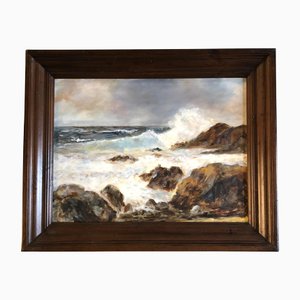


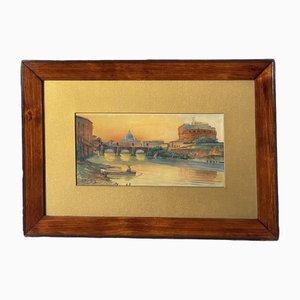
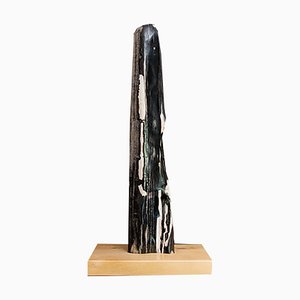
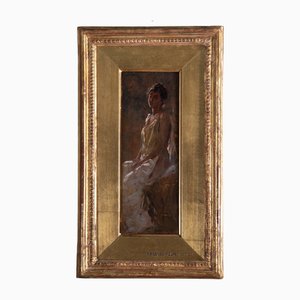
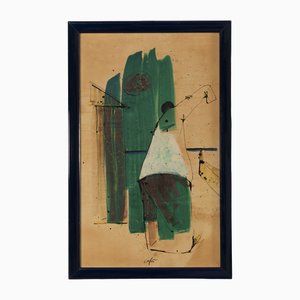
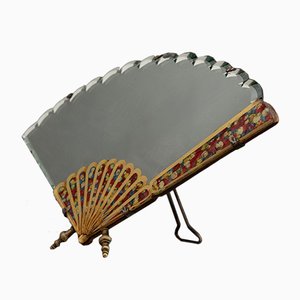
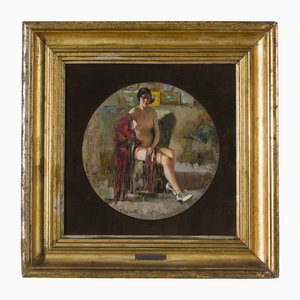

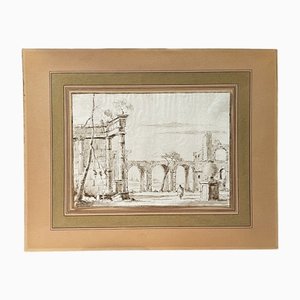


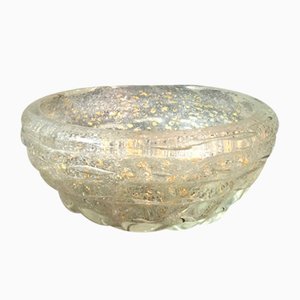
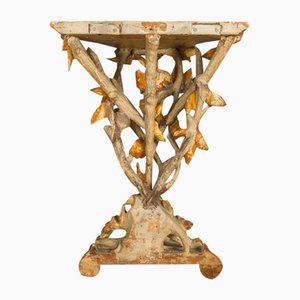
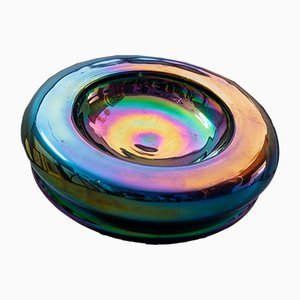
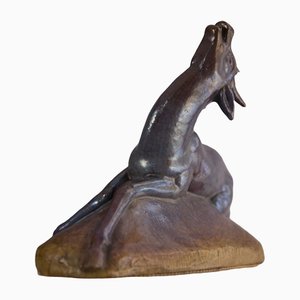
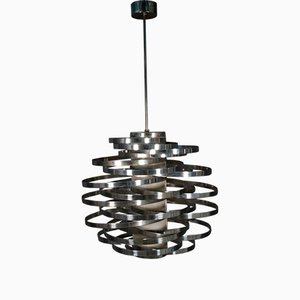
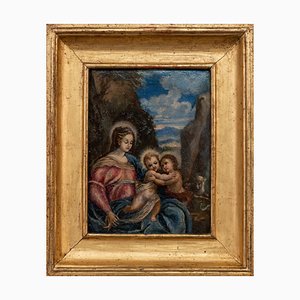
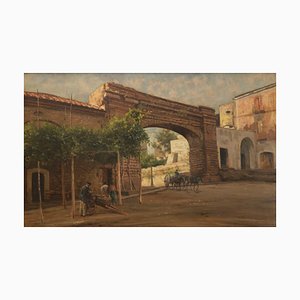
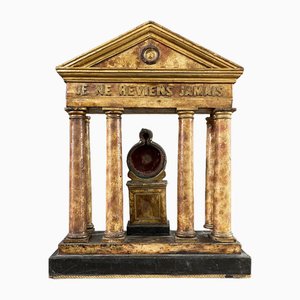
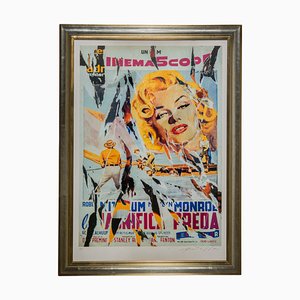
Contacta con nosotros
Haz una oferta
¡Hemos notado que eres nuevo en Pamono!
Por favor, acepta los Términos y condiciones y nuestra Política de privacidad
Contacta con nosotros
Haz una oferta
¡Ya casi está!
Para seguir la conversación en la plataforma, por favor completa el registro. Para proceder con tu oferta en la plataforma, por favor completa el registro.Exitoso
Gracias por tu consulta, alguien de nuestro equipo se pondrá en contacto contigo en breve.
Si eres profesional del diseño, por favor solicita aquí los beneficios del Programa comercial de Pamono